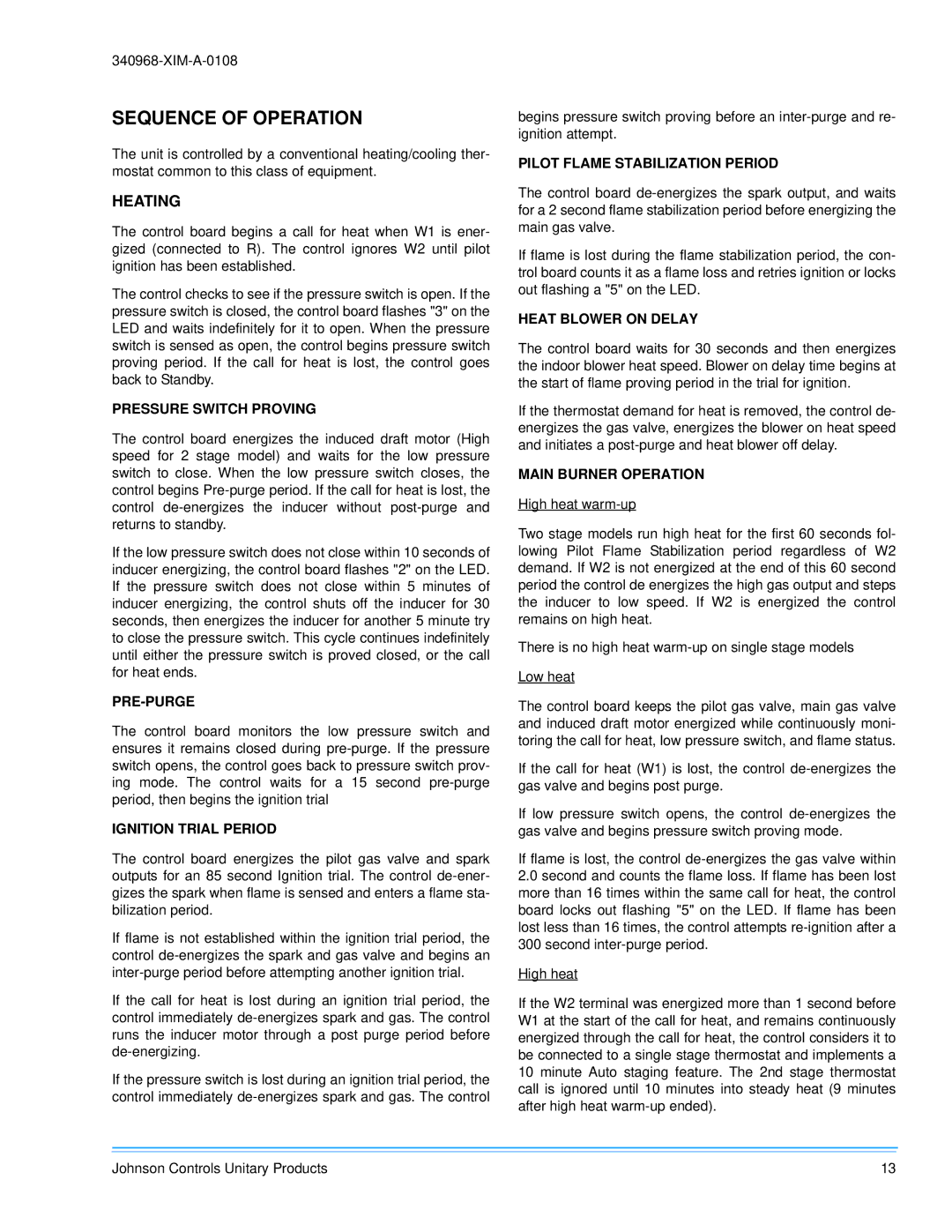340968-XIM-A-0108 specifications
Johnson Controls 340968-XIM-A-0108 is a sophisticated component designed for advanced building management and automation systems. This device is engineered to enhance the performance and efficiency of HVAC (Heating, Ventilation, and Air Conditioning) systems, contributing significantly to energy conservation and optimal climate control in commercial and industrial environments.One of the main features of the Johnson Controls 340968-XIM-A-0108 is its robust compatibility with various building management systems. This component integrates seamlessly with existing systems, allowing for quick deployment and ease of use. The flexibility of this device supports multiple communication protocols, making it a versatile choice for systems upgrades or replacements.
Another standout characteristic of the 340968-XIM-A-0108 is its advanced sensing technologies. This device is equipped with high-precision sensors that monitor temperature, humidity, and air quality, providing real-time data to the building management system. The ability to collect accurate environmental data enables facility managers to make informed decisions that enhance comfort and efficiency.
Energy efficiency is a key focus of the Johnson Controls 340968-XIM-A-0108. The device incorporates intelligent algorithms that optimize HVAC operations, significantly reducing energy consumption. By analyzing usage patterns and adjusting settings accordingly, it helps facilities decrease operational costs while maintaining ideal indoor conditions.
In addition to its operational efficiency, the Johnson Controls 340968-XIM-A-0108 features a user-friendly interface that simplifies monitoring and management. The intuitive design allows operators to easily access system data and make adjustments as necessary without requiring extensive technical knowledge. This feature enhances the overall user experience and promotes efficient building management.
Safety and reliability are also prioritized in the design of the 340968-XIM-A-0108. Built with durable materials and rigorous testing standards, it ensures long-term operation under various conditions. Furthermore, the device supports multiple fail-safes and alarms, providing peace of mind to facility managers regarding system performance and safety.
In conclusion, the Johnson Controls 340968-XIM-A-0108 stands out in the building automation market due to its compatibility, sensing technologies, energy efficiency, user-friendly interface, and reliable performance. These features make it an essential component for optimizing HVAC operations and ensuring sustainable building management practices.
